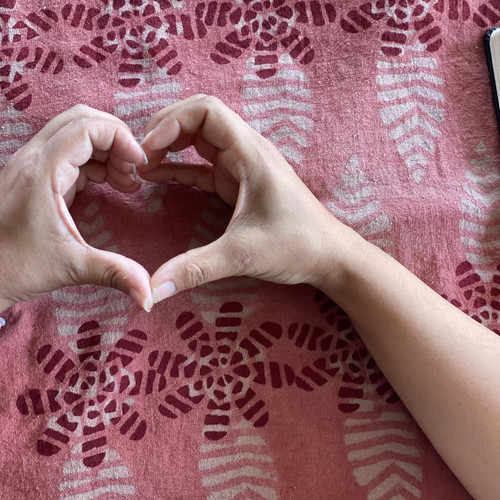What Is Block Print Fabric?
6th Nov 2023
What is block print fabric?
Block print fabric is a type of fabric that is printed using carved wooden blocks. The block printing process is a traditional method of textile printing that has been used for centuries. It is a time-consuming process, but it produces beautiful and unique fabrics.
Block printing process
The block printing process begins with the carving of the wooden blocks. The blocks are carved with intricate designs, and each block is used to print a different part of the design. Once the blocks are cut, they are dipped in dye and then pressed onto the fabric. This process is repeated until the entire design is printed.
Characteristics of block print fabric
Block print fabric is known for its unique designs, eco-friendly production process, durability, and versatility.
- Unique designs: Block print fabrics are often characterized by their unique and intricate designs. These designs can be traditional or modern, and they can be inspired by a variety of sources, such as nature, culture, and art.
- Eco-friendly production process: Block printing is a relatively eco-friendly production process. The dyes used for block printing are typically made from natural materials, and the water used in the process is recycled.
- Durability: Block print fabrics are very durable and can last for many years. This is because the natural dye or ink is transferred directly into the fabric rather than being printed on top of it.
- Versatility: Block print fabric can be used for a variety of purposes, such as clothing, cloth napkins, home décor, art, and crafts. It can also be used to print on a variety of sustainable fabrics, such as cotton, linen, and silk.
Check out these block print dresses and napkins by Ichcha. We're sure you'll find something you love.

Advantages of block print fabric
Block print fabric has many advantages, including:
- Unique and beautiful designs
- Eco-friendly production process
- Durable and long-lasting
- Versatile and can be used for a variety of purposes
Disadvantages of block print fabric
Block print fabric also has some disadvantages, including:
- Can be expensive
- Time-consuming to produce
- It may require special care and handling
Overall, block print fabric is a high-quality and versatile fabric that is known for its unique designs and eco-friendly production process. It is a good choice for people who are looking for a fabric that is both stylish and sustainable.
History of block printing
The history and origins of block printing can be traced back to China during the Tang Dynasty (618-907 AD). The earliest known evidence of block printing is a Buddhist text that was printed in the 8th century AD. Block printing was used to print religious texts and images, as well as textiles.
Spread of block printing to different parts of the world
Block printing spread to Japan in the 8th century AD and to Korea in the 9th century AD. It was introduced to Europe by the Crusaders in the 11th century AD and to the Americas by European colonists in the 16th century AD.
In India, block printing has a long and rich history. The earliest known evidence of block printing in India dates back to the 11th century AD. Block printing was used to print textiles, as well as religious texts and images. The Mughal Empire (1526-1857 AD) was a golden age for block printing in India. The Mughals were patrons of the arts, and they commissioned many beautiful block printed textiles.
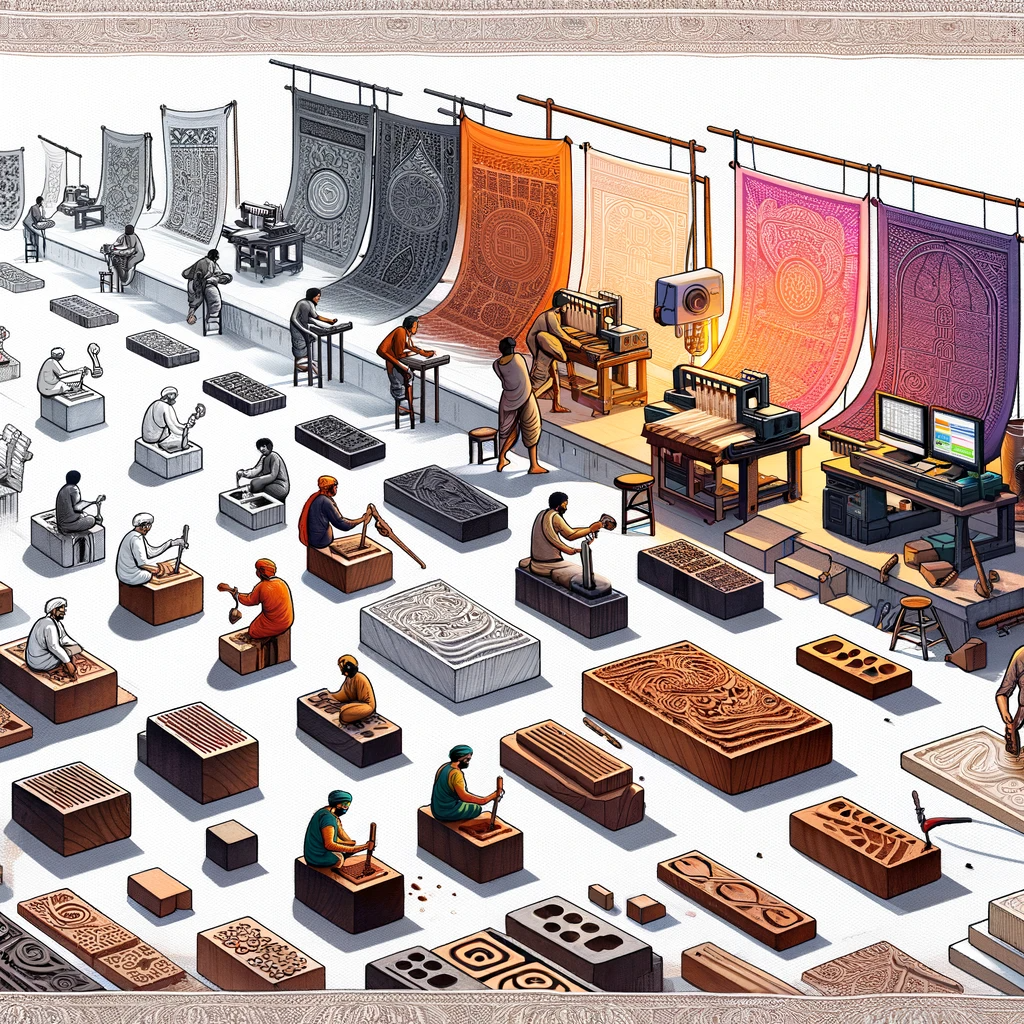
Evolution of block printing techniques
Early block prints were made using carved wooden blocks. Metal blocks were later used for more durable and precise prints. In the 19th century AD, new block printing techniques were developed, such as chromolithography, which allowed for the printing of multi-colored designs.
In the 20th century AD, block printing techniques continued to evolve. New synthetic dyes and inks were developed, and new printing methods were invented. Today, block printing is used to produce a wide variety of textiles, art prints, and other products.
Block printing in the modern world
Block printing is still used today to produce textiles, art prints, and other products. It is a popular craft in many parts of the world, including India, Japan, and Mexico. Block printing is also used as a teaching tool and as a form of artistic expression.
In recent years, there has been a renewed interest in block printing, both as a craft and as a form of art. Many contemporary artists are using block printing to create unique and innovative works. Block printing is also being used to produce sustainable and ethical fashion.
Types of Block Print Fabric
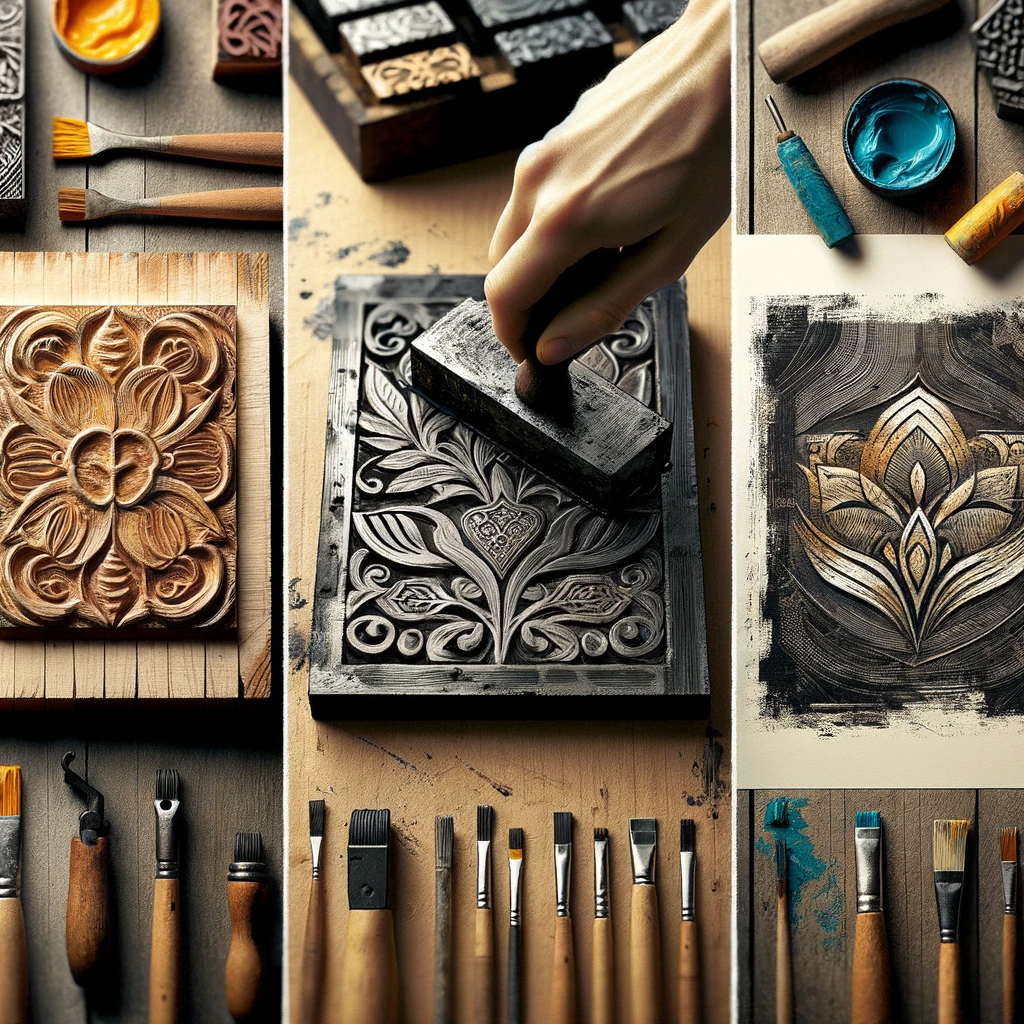
Different Types of Wood and Other Materials Used for Block Printing
Wood is the most common material used for block printing, but other materials, such as metal, rubber, and linoleum, can also be used. The type of material used for the block depends on the desired effect.
Wooden blocks are durable and easy to carve, making them a good choice for beginners. Softwood, such as pine, is easier to carve but less durable than hardwood, such as maple. Hardwood blocks are a good choice for printing on fabrics that require a lot of detail, such as silk and velvet.
Metal blocks are more durable than wooden blocks and can produce more precise prints. However, they are more difficult to carve and require special tools. Metal blocks are often used for commercial block printing operations.
Rubber blocks are a type of soft rubber block that is easy to carve and produces sharp prints. Rubber blocks are often used by beginners and hobbyists.
Linoleum blocks are a type of hard rubber block that is more durable than rubber blocks and can produce more precise prints. Linoleum blocks are often used by artists and printmakers.
Different Types of Block Printing Dyes and Inks
A variety of dyes and inks can be used for block printing. The type of dye or ink used depends on the type of fabric being printed on and the desired effect.
Water-based dyes are the most common type of dye used for block printing. They are easy to use and clean up. Water-based dyes are typically used for printing on natural fabrics, such as cotton and linen.
Oil-based dyes are more durable than water-based dyes, but they are more difficult to use and clean up. Oil-based dyes are often used for printing on synthetic fabrics, such as polyester and nylon.
Natural dyes are made from plants and minerals. They are eco-friendly and produce beautiful, earthy colors. Natural dyes are often used for block printing traditional textiles.
Different Block Printing Techniques
There are many different block printing techniques, each with its own unique effect. Some of the most common block printing techniques include:
Direct printing is the most common block printing technique. It is a simple process that involves pressing the inked block directly onto the fabric.
Indirect printing is a more complex technique that involves transferring the ink from the block to another surface, such as paper or fabric, before transferring it to the final fabric. Indirect printing is often used to create multi-colored prints or to print on fabrics that are difficult to print on directly, such as silk and velvet.
Stencil printing is a technique that uses a stencil to apply the ink to the fabric. The stencil is placed over the fabric, and the ink is applied through the cutouts in the stencil. Stencil printing is a good choice for beginners or for creating simple designs.
Different Styles of Block Print Fabric
Block print fabric can be found in a variety of styles, from traditional to modern. Some of the most popular block print fabric styles include:
Geometric designs are often inspired by nature and traditional art forms. Geometric designs can be simple or complex, and they can be used to create a variety of different effects, from bold and graphic to delicate and intricate.
Floral designs are another popular style of block print fabric. Floral designs can be realistic or abstract, and they can be used to create a variety of different effects, from romantic and feminine to bold and vibrant. These block print napkins are made using beautiful floral designs.
Animal designs are a fun and whimsical style of block print fabric. Animal designs can be realistic or cartoonish, and they can be used to create a variety of different effects, from playful and childlike to sophisticated and elegant.
Abstract designs are a unique and expressive style of block print fabric. Abstract designs can be inspired by anything, such as nature, emotions, or the artist's imagination. Abstract designs can be used to create a variety of different effects, from subtle and understated to bold and eye-catching.
Block print fabric is a versatile and beautiful fabric that can be used for a variety of purposes. It is a popular choice for clothing, home décor, art, and crafts. Block print fabric is also a sustainable and eco-friendly fabric choice.
Check out our eco-friendly block print fabrics.
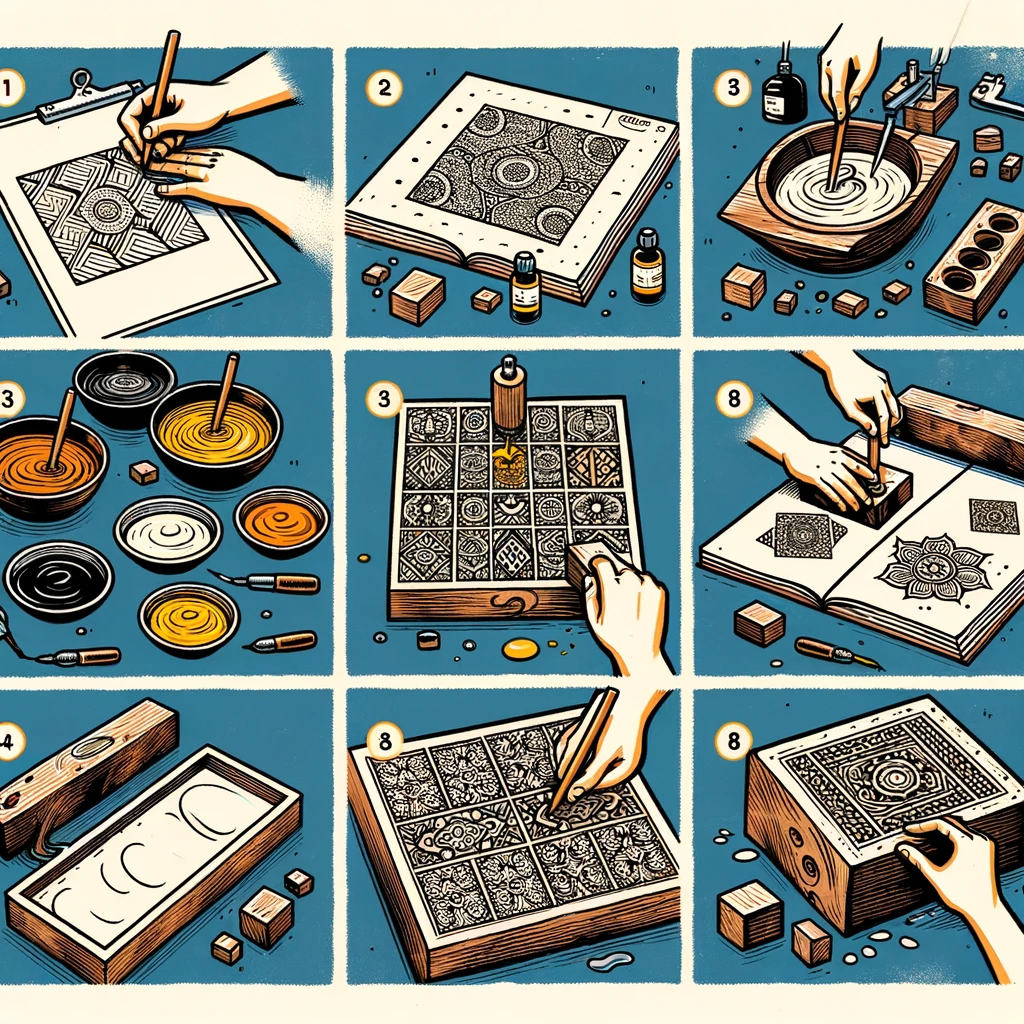
How is Block Print Fabric Made?
Designing the block print pattern
The first step in creating block print fabric is to design the pattern. The pattern can be hand-drawn or created using a computer. If the pattern is hand-drawn, it is important to transfer it to the block in a way that will preserve the details of the design.
One way to do this is to trace the design onto paper and then cut out the individual shapes. The shapes can then be transferred to the block using carbon paper.
If the pattern is created using a computer, it can be printed out and then transferred to the block using carbon paper. Alternatively, the pattern can be projected onto the block using a projector and then traced onto the block with a pencil.
Carving the block print block
Once the pattern is on the block, it is time to start carving. The block can be carved by hand or using a machine. If the block is being carved by hand, a variety of different carving tools can be used. The type of carving tool used will depend on the desired effect.
For example, a small, sharp carving tool can be used to create fine details, while a larger, more blunt carving tool can be used to create bold, graphic designs.
If the block is being carved using a machine, a CNC router can be used to quickly and accurately carve the design into the block. CNC routers are typically used for commercial block printing operations.
Setting up the block printing table
The block printing table is a flat surface where the fabric is printed. The table is typically covered with a layer of felt or foam to protect the fabric. The table should be level and sturdy to ensure that the prints are even and consistent.
Applying the dye or ink to the block
The dye or ink is applied to the block using a roller or brush. The dye or ink should be applied evenly to ensure a consistent print. If too much dye or ink is applied, the print will be smudged. If too little dye or ink is applied, the print will be faded.
Printing the block on the fabric
The fabric is placed on the block printing table, and the block is pressed onto the fabric. The pressure forces the dye or ink to transfer from the block to the fabric. The amount of pressure required will vary depending on the type of fabric being printed on. For example, more pressure will be required to print on a heavy fabric, such as canvas, than on a lightweight fabric, such as silk.
Drying and curing the fabric
Once the fabric is printed, it needs to be dried and cured. The drying and curing process will vary depending on the type of dye or ink used. For example, water-based dyes and inks need to be air-dried, while oil-based dyes and inks need to be heat-cured.
Once the fabric is dry and cured, it is ready to be used. Block print fabric can be used for a variety of purposes, such as clothing, home décor, art, and crafts.
Here are some additional tips for making block print fabric:
- Use high-quality dyes and inks. This will ensure that the prints are bright and durable.
- Make sure that the block is clean and free of debris before printing. This will help to prevent smudged prints.
- Apply the dye or ink evenly to the block. This will ensure a consistent print.
- Use the appropriate amount of pressure when printing. Too much pressure will smudge the print, while too little pressure will result in a faded print.
- Allow the fabric to dry and cure completely before using it. This will ensure that the prints are durable and long-lasting.
With a little practice, you can create beautiful and unique block print fabric that can be used for a variety of purposes.
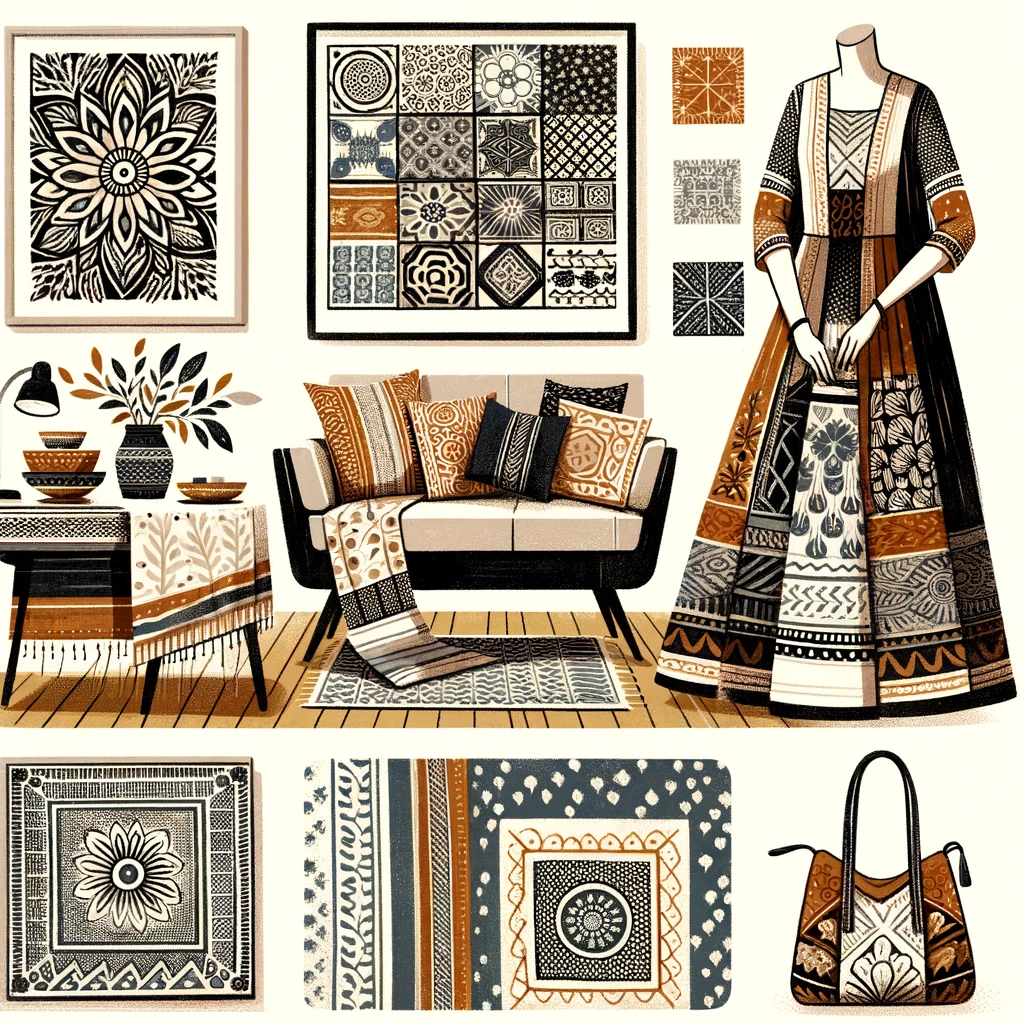
Uses of Block Print Fabric
Block Print Fabric for Clothing
Block print fabric is a popular choice for clothing. It is a versatile fabric that can be used to create a variety of different garments, from casual dresses and skirts to formal shirts and suits. Block print clothing is also a comfortable and breathable textile, making it ideal for warm weather.
Some of the most popular uses of block print fabric for clothing include:
- Dresses and skirts: Block print dresses and skirts are a great way to add a touch of personality and style to your wardrobe. They are also a comfortable and stylish option for summer weather.
- Shirts and blouses: Block print fabric shirts and blouses are a great way to add a touch of sophistication to your work or casual outfits. They can also be dressed up or down, depending on the occasion.
- Pants and shorts: Block print fabric pants and shorts are a fun and stylish option for summer weather. They can be paired with a variety of different tops and shoes to create a variety of different looks.
- Swimwear: Block print fabric is also a popular choice for swimwear. It is a quick-drying and durable fabric, making it ideal for swimming and sunbathing.
Block Print Fabric for Home Décor
Block print fabric is also a popular choice for home décor. It is a versatile fabric that can be used to create a variety of different items, from curtains and pillow covers to bedspreads and tablecloths. Block print fabric can also be used to create wall art and other decorative items.
Some of the most popular uses of block print fabric for home décor include:
- Curtains and drapes: Block print fabric curtains and drapes are a great way to add a touch of personality and style to your home. They can also be used to block out sunlight and protect your privacy.
- Pillow covers: Block print fabric pillow covers are a fun and stylish way to add a pop of color and pattern to your living room or bedroom. They can also be used to add a touch of comfort and support to your couch or bed.
- Bedspreads and throws: Block print fabric bedspreads and throws are a great way to add a touch of warmth and style to your bedroom. They can also be used to keep you warm on cold nights.
- Tablecloths and napkins: Block print tablecloths and napkins are a great way to add a touch of elegance to your dining table. They can also be used to protect your table from spills and stains.
Block Print Fabric for Art and Crafts
Block print fabric can also be used for art and crafts. It is a versatile fabric that can be used to create a variety of different items, from wall art and tote bags to journals and cards. Block print fabric can also be used to create unique and personalized gifts.
Some of the most popular uses of block print fabric for art and crafts include:
- Wall art: Block print fabric wall art is a great way to add a touch of personality and style to your home. It can be framed or hung on its own.
- Tote bags: Block print tote bags are a fun and stylish way to carry your belongings. They are also a reusable option, which is good for the environment.
- Journals and notebooks: Block print fabric journals and notebooks are a great way to add a touch of personality to your writing. They can also be used to create unique and personalized gifts.
- Cards and stationery: Block print fabric cards and stationery are a great way to send a personalized message to friends and loved ones. They can also be used to create unique and memorable invitations and announcements.
Other Uses of Block Print Fabric
Block print fabric can also be used for a variety of other purposes, such as:
- Packaging: Block print fabric can be used to create unique and eye-catching packaging for products.
- Bookbinding: Block print fabric can be used to create unique and beautiful book covers.
- Upholstery: Block print fabric can be used to upholster furniture, such as sofas, chairs, and ottomans.
- Quilting: Block print fabric can be used to create beautiful and unique quilts.
Block print fabric is a versatile and beautiful fabric that can be used for a variety of purposes. It is a sustainable and eco-friendly fabric choice, and it is a great way to add a touch of personality and style to your home and wardrobe.
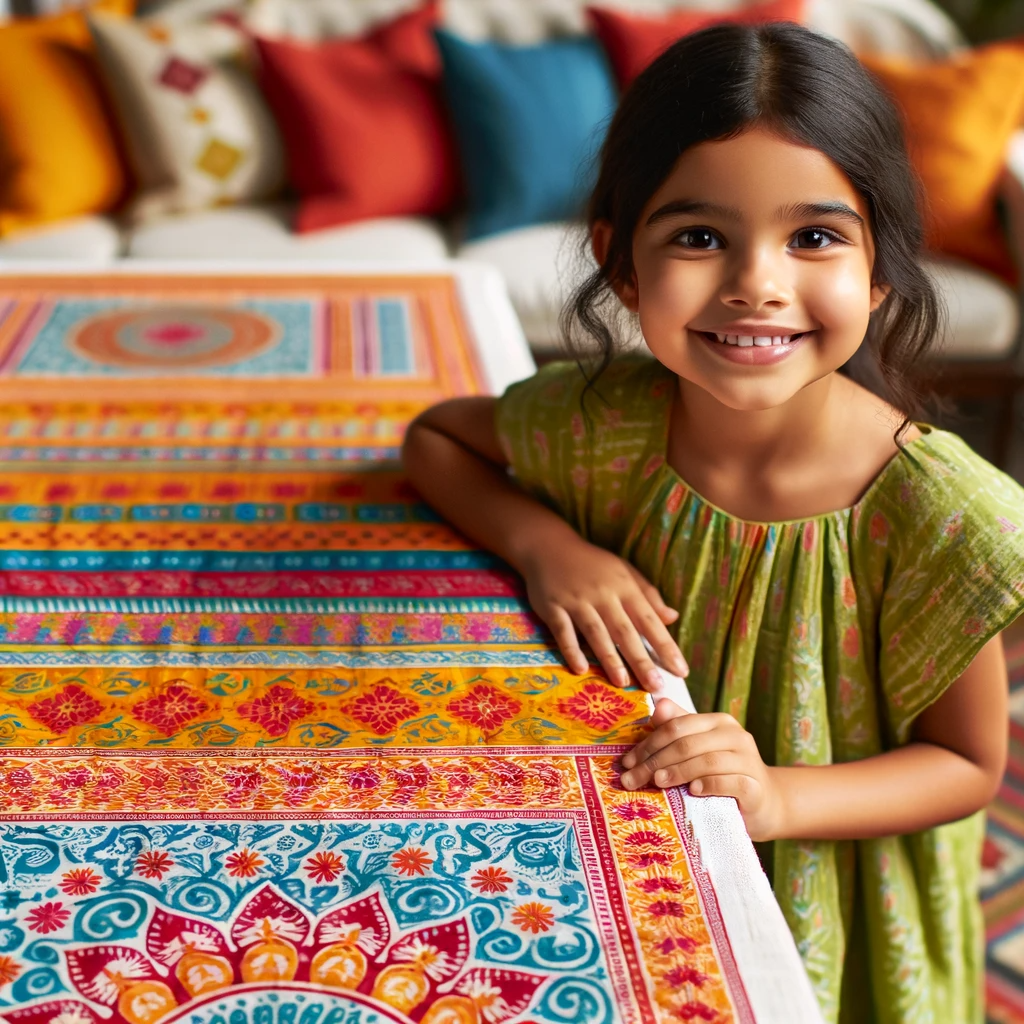
Conclusion
Block print fabric is a versatile and beautiful fabric that has been used for centuries to create a variety of products, including clothing, home décor, art, and crafts. It is a sustainable and eco-friendly fabric choice that is known for its unique designs, durability, and versatility.
Block print fabric is made by printing carved wooden blocks onto fabric using dye or ink. The block printing process is time-consuming, but it produces high-quality fabric with unique and intricate designs. These block printed table linens are perfect examples of block print fabric.
Block print fabric can be used for a variety of purposes, from casual dresses and skirts to formal shirts and suits. It is also a popular choice for home décor, such as curtains, pillow covers, bedspreads, and tablecloths. Block print fabric can also be used for art and crafts, such as wall art, tote bags, journals, and cards.

